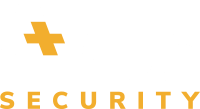Safer Schools: 10 Key Security Systems to Implement for Your Educational Institution
13 January 2025
.jpg?updated=1735893427)
The safety of students and staff is a primary concern for educational institutions, and with classrooms continuing to expand in size the challenge of safeguarding becomes more complex.
Implementing robust schools security systems is essential to provide a safe and secure environment for everyone, so here are 10 crucial tips to consider when reviewing your systems:
Communication is Key
Effective communication during a crisis is critical. Schools need reliable security systems in place for emergency situations. Consider mobile handsets for staff, alarms and lockdown alarms that can secure certain areas during a crisis or attack. Silent alarms and distress alarms can notify relevant personnel and lock specific doors to contain threats. It’s important to test these systems regularly and make sure they are tailored to different scenarios – such as fire safety versus dealing with an intrusion.
Access Control For Schools
Limit the flow of people on your premises with access control systems. Using proximity card readers on entrances or pairing access cards with turnstiles make sure only authorised individuals can enter restricted areas. Access cards can serve multiple functions, including identification and integration with other school systems, such as attendance tracking and cashless vending. They can even reduce administrative tasks for staff, making the overall school experience more efficient.
Clear Signage
Clear, visible signage is essential in guiding staff, students, and visitors in emergencies. Emergency exits and fire escape routes must be clearly marked, and at schools where CCTV is in use, this should also be indicated to comply with UK regulations. Signage should meet legal requirements regarding size, placement, and readability to provide full compliance.
Perimeter Security
Securing the perimeter of your school is one of the most effective ways to keep unwanted individuals off the premises. Make sure there are no weak points in fences or gates and that they are regularly checked for damage or tampering. Installing access control at entry points and using intercoms or gates and barriers at reception areas can help maintain security. Palisade fencing is a popular option due to its durability and difficulty to scale, and access gates that require card entry can keep the building secure, especially outside of school hours.
CCTV for Schools
Security cameras for schools remain one of the most effective ways to deter crime and ensure the safety of your premises. Before installing security cameras, it’s important to define the purpose, whether it’s for monitoring schools visitors, preventing vandalism, or enhancing staff safety. Remember, schools must notify the Information Commissioner’s Office (ICO) about their CCTV system and its use. Proper camera placement and cable management are also key to avoiding vandalism and ensuring the continuity of the system.
Security Lighting
With the darker months of winter, outdoor security lighting is a must. Install lights along footpaths, playgrounds and car parks to make sure people feel safe when entering or leaving the school grounds. Security lighting should be designed to work with your CCTV system, such as floodlights that activate when motion is detected by cameras.
Visitor Management System
It’s essential to know who is on your school premises at all times. A visitor management system that allows individuals to sign in at the reception and receive an ID badge linked to access control can help you track movement throughout the building. These systems can be tailored to give contractors temporary access to specific areas or restrict their movement based on predefined parameters.
Accessing Data and Records
In the event of a power outage or emergency, you need to ensure that crucial student and staff records remain accessible. Installing an Uninterrupted Power Supply (UPS) unit can allow access to these records without disruption. Consider cloud-based backup solutions that enable access to data remotely, ensuring vital records are always within reach, even during emergencies.
Emergency Procedures
Training staff and students on emergency procedures is essential for a quick, efficient response during any crisis. Regular drills should be held for various scenarios, including fires, lockdowns and other emergencies, so everyone knows their role and actions to take. Reviewing and updating procedures regularly gives preparedness in any situation.
Risk Assessments
The first step in improving security is conducting a thorough risk assessment. This helps identify potential vulnerabilities and plan appropriate security measures. It’s important to update the assessment when significant changes are made to the school’s premises, such as building extensions or new security system installations. Be sure to keep your staff, students, and visitors informed about the emergency procedures and regularly review them to make sure they remain effective.
By implementing these 10 schools security systems, your establishment can create a safer environment for students, staff and visitors, while staying compliant with current UK regulations.
Whether you're upgrading your existing schools systems or starting fresh, integrating advanced security solutions with regular training and awareness will help mitigate risks and provide a secure educational experience for everyone.
A-Plus Security are a NSI Gold Approved company, who provide a range of security installation and maintenance services to help you establish a robust and future-ready position for your premises.
Contact us here or call us on 01702 293157 for a consultation to review and enhance your current security systems.
